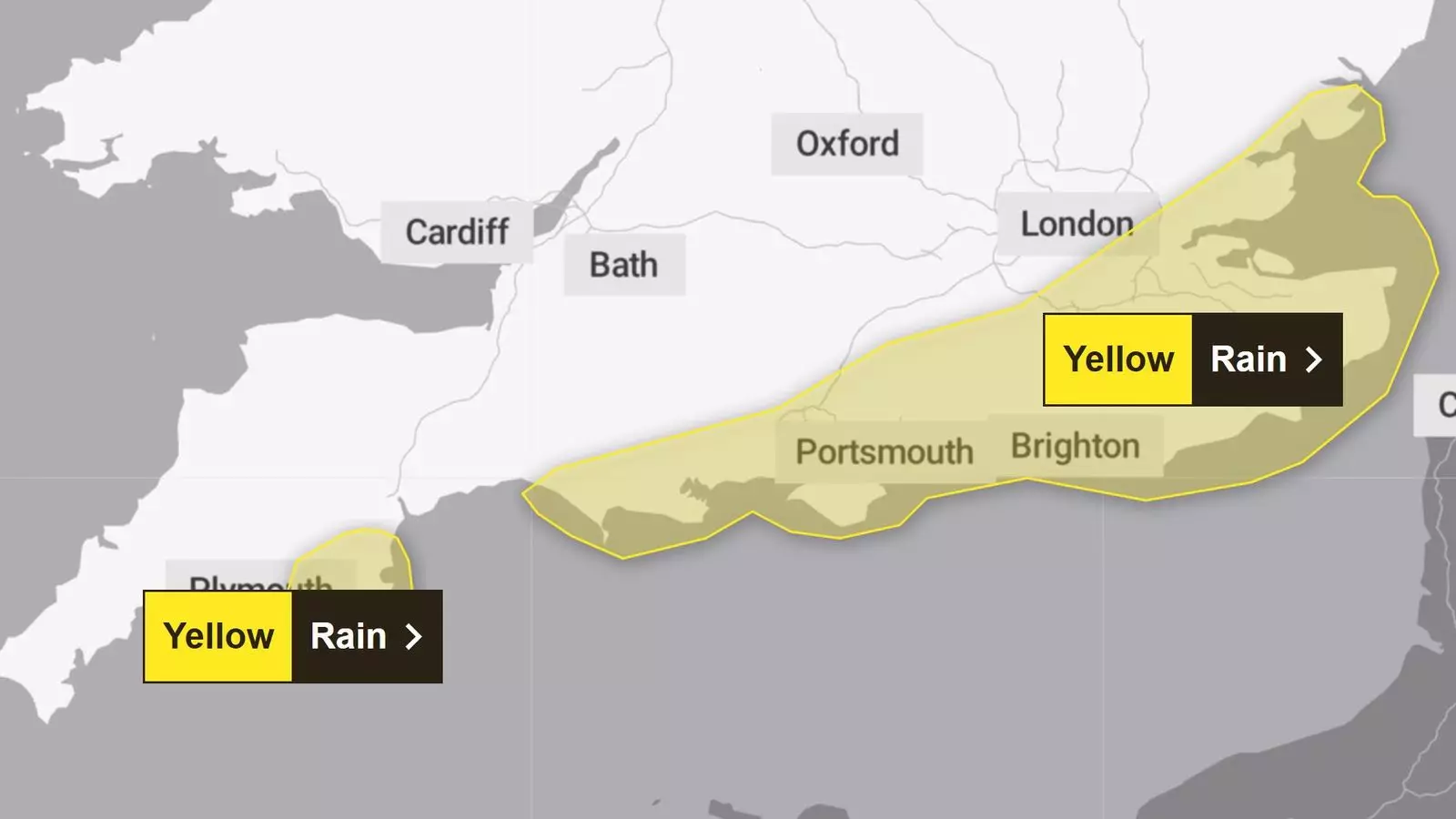This evening marks the onset of Storm Conall, the third named storm to impact the UK this season, which poses a significant threat of heavy rainfall to Southern England. Following closely on the heels of Storm Bert, which wreaked havoc with relentless downpours and destructive winds over the past weekend, the UK braces for another bout of adverse weather. The Dutch weather service, KNMI, has officially designated this storm as Conall, essentially categorizing an area of low pressure that is expected to escalate. Rainfall predictions suggest parts of southern England might experience accumulations reaching 50mm (approximately two inches), exacerbating existing conditions already battered by previous storms.
The Met Office has proactively issued a yellow rain warning for several southern counties, including Kent, Sussex, and the Isle of Wight. The warning is in effect from 10 PM on Tuesday night until noon on Wednesday, highlighting areas such as Essex, Surrey, Hampshire, and parts of London among those at risk. Forecasts predict that rainfall amounts could reach 15 to 20mm (0.6 to 0.8 inches), with some regions likely witnessing up to 40mm (1.6 inches). In certain susceptible areas, a 50mm downpour is not out of the question, with the Met Office alerting that such conditions could precipitate travel disruptions and localized flooding, impacting homes and businesses alike.
Only days after facing the repercussions of Storm Bert, communities are still in recovery mode. This previous storm proved to be immensely detrimental, with wind speeds surpassing 80 mph, transforming roads into torrents and inundating hundreds of homes. As Storm Conall approaches, authorities caution that the threat of further flooding is not an isolated incident, but rather a continuum of troubling weather patterns affecting the region. Chris Wilding from the Environment Agency indicated that some areas in Northamptonshire could encounter “significant flooding impacts,” while minor flooding has already been observed along the River Severn.
As of Tuesday evening, the situation remains dire with over 90 flood warnings and an excess of 120 flood alerts active across the UK. Alarmingly, a severe flood warning—signifying an immediate danger to life—continues to be enforced at the Billing Aquadrome holiday park and adjacent communities near the River Nene in Northampton. These proactive measures highlight the necessity of effective communication in the face of increasing storm activities, a strategy that has been institutionalized through the storm naming system initiated by weather services in the UK and Ireland.
Looking ahead, the meteorological outlook does not seem promising. The Met Office has indicated that the potential for further heavy rains persists, particularly across southern regions, combining with a forecast for cooler temperatures. This climatic shift raises concerns among residents and officials alike, especially given the unpredictability of weather patterns in recent years. The cumulative impacts of ongoing storms underscore the broader issue of climate change, prompting discussions regarding infrastructure resilience, emergency preparedness, and community support in dealing with weather extremities.
In light of this precarious situation, it is imperative that communities come together to assess their preparedness for impending weather events. Local governments and agencies need to collaborate closely, ensuring that residents remain informed about forecast updates and emergency protocols. As Storm Conall approaches, the need for vigilance and proactive measures intensifies, urging individuals to remain alert to warnings issued by meteorological bodies. In an era where storms may become more frequent and severe, fostering a culture of preparedness and responsiveness might just mitigate some of the impacts faced during these tumultuous weather events.
Storm Conall’s arrival stands as a stark reminder of the increasing volatility of weather systems, necessitating collective action, awareness, and readiness within affected communities. As we prepare to face the storm, the resilience of the UK population is put to the test once more.


Leave a Reply